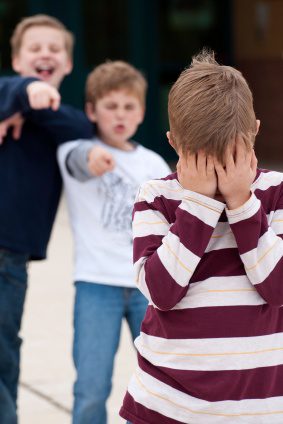How Does Bullying Develop?
The question could just as easily be phrased: How does being bullied develop?
Let us be clear, bullying does not emerge suddenly in children. Nor does victimhood. The difference is that while a bully’s behaviour often reveals itself early, the signs of a victim can go unnoticed. Parents, reluctant to acknowledge their child’s cruelty, may dismiss aggression as a phase. But research confirms that bullying begins far earlier than most assume, between the ages of two and four (Vlachou et al., 2011).
Origins
How does bullying take root? Social learning theory (Bandura, 1977) suggests that children imitate behaviours they observe. If a child witnesses bullying at home, whether through parental aggression, verbal domination, or physical punishment, they learn that control is exerted through force (Olweus, 1993). When this child enters a creche or school, they bring with them a repertoire of survival tactics: deflection, intimidation, and coercion. These are not innate traits but learned behaviours, honed in environments where power dictates safety.
Conversely, a child raised in a nurturing home, where conflict is resolved with patience and empathy, is far less likely to initiate bullying (Espelage & Swearer, 2003). Their social toolkit consists of cooperation, not conquest.
External influences also shape behaviour. Longitudinal studies (Anderson et al., 2010) show that exposure to violent media increases aggressive tendencies in children. If dominance is portrayed as effective, they will replicate it. Conversely, prosocial media and parental guidance can encourage empathy (Gentile et al., 2009).
Sibling dynamics, too, play a role. A child who endures aggression from an older sibling may later mimic that behaviour with peers (Wolke & Skew, 2012). Alternatively, if they have been the submissive one at home, they may carry that vulnerability into the classroom.
The bullied child is often marked by fragility, whether inherited from domestic strife or inherent sensitivity (Arseneault et al., 2006). They submit because submission has kept them safe before, or because resistance feels impossible.
Evolution
Between ages two and four, a child may snatch toys or shove to assert dominance. This is not random; it is rehearsed (Tremblay et al., 2004). They have learned that aggression protects what is theirs.
By four to six, the behaviour sharpens. Threats replace tantrums. The bully tests boundaries, seeking weakness. If a victim cries or surrenders, the lesson is clear: This works (Salmivalli et al., 1996).
And here lies the dangerous turn, neuropsychological studies (Decety et al., 2009) suggest some bullies begin to “enjoy” causing pain. The rush of power becomes its own reward. Left unchecked, this is how a lifelong bully is forged.
By adolescence, the mechanisms are refined. The bully no longer just takes, they target. They spot insecurities in others because they recognise their own. A boy grappling with hidden homosexuality might persecute an effeminate peer (Poteat & Espelage, 2007), deflecting suspicion through cruelty.
Meanwhile, the bullied child, conditioned to endure, carries that helplessness into adulthood (McDougall & Vaillancourt, 2015). Uncorrected, the pattern repeats.
Mass Contagion
Bullying thrives in packs. Social identity theory (Tajfel & Turner, 1979) explains how bystanders, seeking group approval, join in. A hierarchy forms: the ringleader, the followers, the scapegoat (Salmivalli, 2010).
Yet remove the group, and the dynamic collapses. Many bullies, alone, are ordinary children (Sutton & Smith, 1999). It is the collective energy, the permission of the crowd, that fuels their cruelty.
Conclusion
Bullying is cultivated between ages two and four. Victimhood, too, takes root in these formative years. The responsibility lies with caregivers: to observe, to intervene, to dismantle harmful behaviours before they harden (Ttofi & Farrington, 2011).
Media must be monitored. Sibling conflicts guided. Aggression must never be dismissed as "kids being kids."
Because bullying does not develop passively. It is taught. And it can be untaught, but only if adults choose to see it.
References
- Anderson, C. A., et al. (2010). Pediatrics, 125(4), 683-689.
- Arseneault, L., et al. (2006). Journal of Child Psychology and Psychiatry, 47(1), 16-24.
- Bandura, A. (1977). Social Learning Theory. Prentice-Hall.
- Decety, J., et al. (2009). Neuropsychologia, 47(2), 381-387.
- Espelage, D. L., & Swearer, S. M. (2003). School Psychology Review, 32(3), 365-383.
- Olweus, D. (1993). Bullying at School: What We Know and What We Can Do. Blackwell.
- Poteat, V. P., & Espelage, D. L. (2007). Developmental Psychology, 43(6), 1482-1496.
- Salmivalli, C., et al. (1996). Aggressive Behavior, 22(1), 1-15.
- Tremblay, R. E., et al. (2004). Pediatrics, 114(1), e43-e50.
- Vlachou, M., et al. (2011). Early Education and Development, 22(5), 768-783.
David Ellis
Originally written in September 2022 and revised in June 2025


















